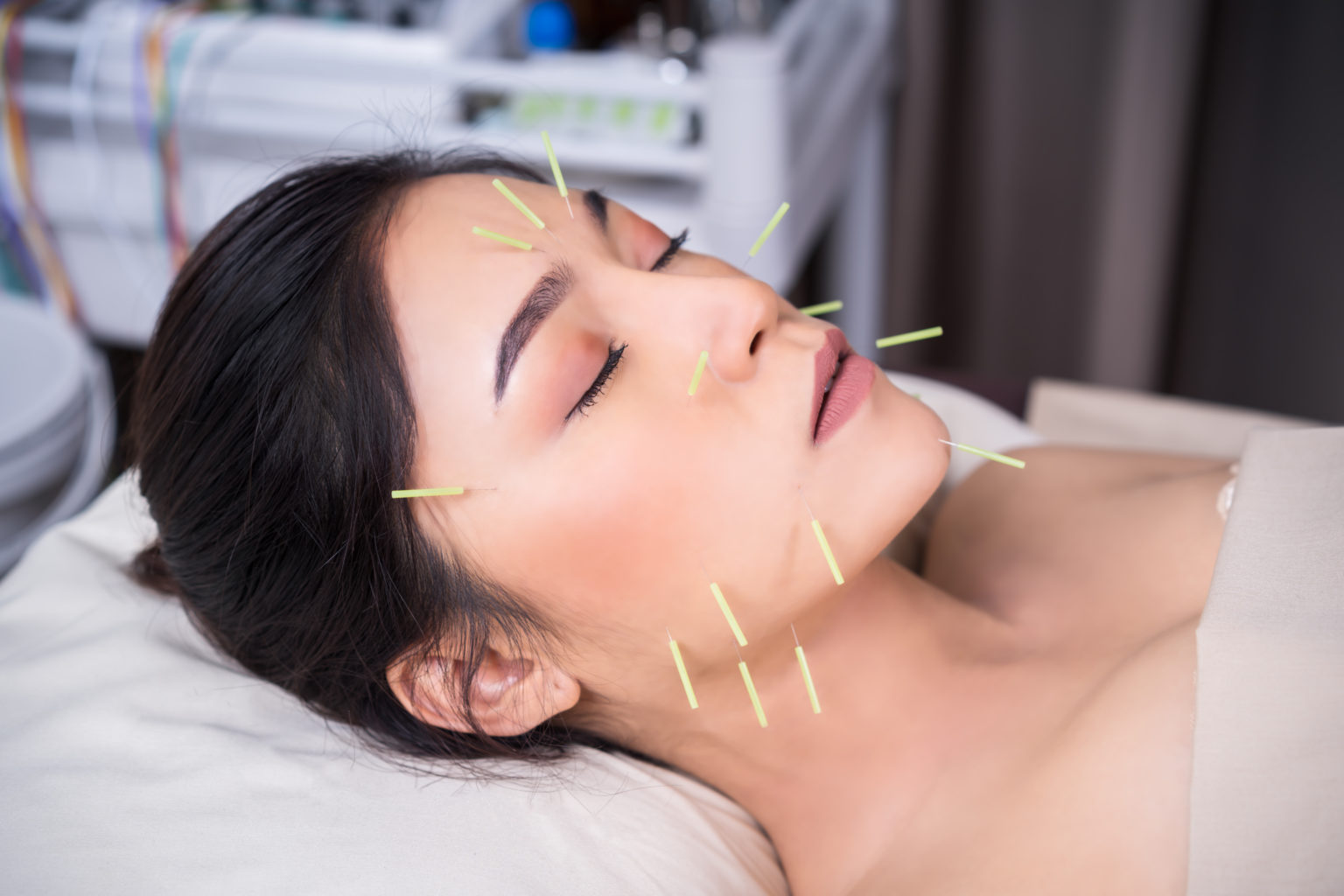
There is increasing evidence that acupuncture for jaw pain is a reasonable treatment approach.
Temporomandibular joint (TMJ) disorders are chronic pain disorders, meaning the pain is persistent and poorly controlled. Pharmacological interventions with drugs like opioids are generally ineffective for chronic TMJ pain and increase the risk of dependence and abuse. On the other hand, alternative pain control interventions like acupuncture are non-pharmacologic and non-invasive, making them of great interest to both doctors and patients. Here’s what you need to know about acupuncture for jaw pain.
Acupuncture is a Traditional Chinese Medicine (TCM) technique that uses small needles placed at specific points in the body to achieve a therapeutic response. From a TCM point of view, acupuncture rebalances the life-force (chi) by directing vital energy through meridians in the body, resulting in pain relief. Western medicine proposes that acupuncture causes the release of natural endorphins by stimulating nerve receptors, thereby resulting in pain relief.
Regardless of how it works, it’s clear that the pain relieving effect of acupuncture is real. A 2018 article in the Journal of Pain looked at pooled data representing over 20,000 patients and found that acupuncture for chronic pain provides a positive treatment effect vs. sham treatments and vs. no treatment. Furthermore, they found that the positive results were durable, with 85% of responders still having pain relief at the one-year mark.
You would think getting stuck with needles would hurt, but most people report that acupuncture is relatively painless. Typical acupuncture therapy involves multiple sessions lasting 15-30 minutes. Probably the most important thing to do is make sure your practitioner is licensed and has the proper credentials.
According to the National Institutes of Health, acupuncture as an intervention, when performed by a trained practitioner, is relatively safe, with very few complications or adverse events. The most important safety concern is that the needles used are sterile.
There is a wide range of TMJ disorders (TMDs), with over 30 conditions identified by the diagnostic schema created by the International Association for Dental Research. One way to simplify this is to determine whether the source of pain is the jaw joint itself or the jaw muscles. You may need to see a specialist to determine what type of TMJ disorder you have.
This distinction between jaw joint pain and jaw muscle pain is important when evaluating the effectiveness of acupuncture for TMJ pain. When studies are pooled together, they show that the pain-reducing effect of acupuncture is strongest in people with TMDs of muscular origin.
“Most researchers conclude that given the risk/benefit proposition of acupuncture for TMJ pain and the apparent positive clinical effects, acupuncture is a reasonable adjuvant treatment for TMJ disorders”, explains Bradley Eli, DMD, MS, an Orofacial Pain Specialist.
In chronic pain disorders like certain TMDs, the areas of the brain that generate pain signals become hyperexcitable, such that even normal sensory input from the TMJ or jaw muscles start to register in the brain as being painful. This is called “central sensitization”. When this happens, a guarding reflex is triggered in the jaw, leading to muscle tension, muscle fatigue, and more pain. This is called “peripheral sensitization”. These two sources of mutually reinforcing sensitization create a vicious cycle of pain that can be very difficult to reverse.
The best way to break the cycle of pain is to use a multimodal approach. Acupuncture is a reasonable addition to a broad treatment approach because it has a potentially high reward with a low risk and can be used in conjunction with other treatments. Here are some other conservative treatments for jaw pain relief:
All of the components listed above are included in the Speed2Treat® Home Healing Kit. This kit was designed to provide you with multiple non-pharmacological tools that you can use for rapid pain relief. Start your journey towards jaw pain relief today with the Speed2Treat® Home Healing Kit!
